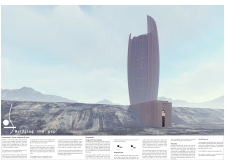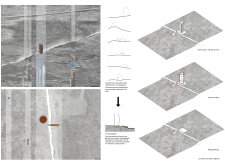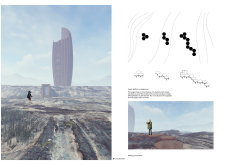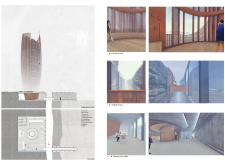5 key facts about this project
At its core, the project represents a synthesis of various design ideas that embrace versatility. Functioning as [insert specific function such as a cultural center, community hub, residential complex, etc.], it caters to a diverse group of users, highlighting the importance of adaptability in modern architectural projects. The layout facilitates a fluid interaction among spaces, enabling easy movement from one area to another while promoting social engagement.
Key elements of the design include a carefully organized spatial arrangement that maximizes functionality and accessibility. Open-plan areas are interspersed with zones designated for privacy, exemplifying the balance between communal activities and personal space. Large windows and glass facades invite natural light, enhancing the interior atmosphere and connecting users with the surroundings. This focus on transparency helps create a welcoming environment, inviting both users and passersby to engage with the building.
The material palette chosen for this project is equally significant, integrating a combination of concrete, glass, timber, steel, and stone. Concrete serves not only as the structural backbone but also adds a contemporary touch to the overall aesthetic. Glass elements dominate the facades, providing unobstructed views and establishing a visual connection with the exterior environment, which is pivotal for a project located in an area rich with natural beauty. Timber is used selectively to introduce warmth and tactile qualities to the interiors, while stone accents ground the structure in its context, reflecting local architectural traditions.
One of the unique design approaches employed in this project is the incorporation of sustainable practices. The architectural design prioritizes energy efficiency by integrating passive solar techniques, green roofs, and rainwater harvesting systems, thus minimizing its ecological footprint. These features not only enhance the building's operational sustainability but also serve as educational components, demonstrating the potential for responsible architecture to align with environmental stewardship.
Landscape design complements the architecture, creating an outdoor environment that is as considered as the interior. Thoughtfully planned green spaces and seating areas promote social interaction while respecting the existing topography. The landscaping extends the livable area of the project and reinforces a connection with nature, underscoring the ethos of the overall design.
The architectural language of the project reflects a contemporary sensibility understood through its clean lines, functional forms, and a harmonious play of materials. Its unique features—for instance, [mention any standout characteristics such as courtyards, terraces, or innovative structural systems]—further distinguish it from conventional designs. This project not only serves its intended purpose but also engages the community through its inviting and adaptable spaces.
As you delve into the details of this architectural design, we encourage you to explore the architectural plans, architectural sections, and architectural designs that reveal the depth of thought and care that has gone into this project. Each element contributes to a cohesive vision, illustrating an array of architectural ideas aimed at enhancing user experience while firmly establishing a dialogue with its environment. For further insights, examining these elements will provide a more comprehensive understanding of how this project navigates the complexities of modern architectural practice.


























